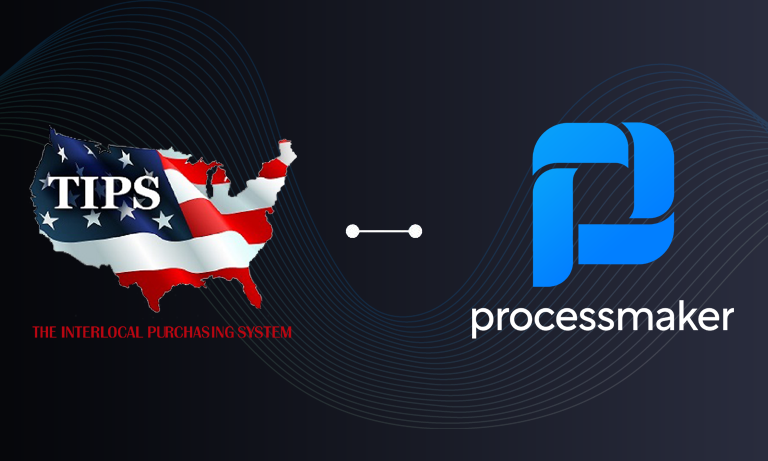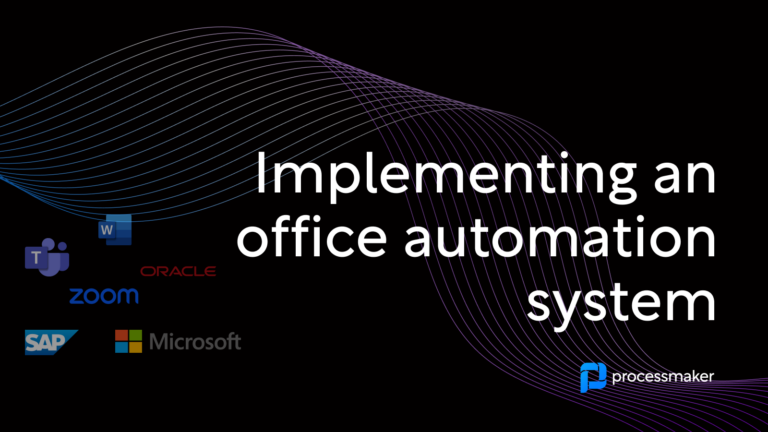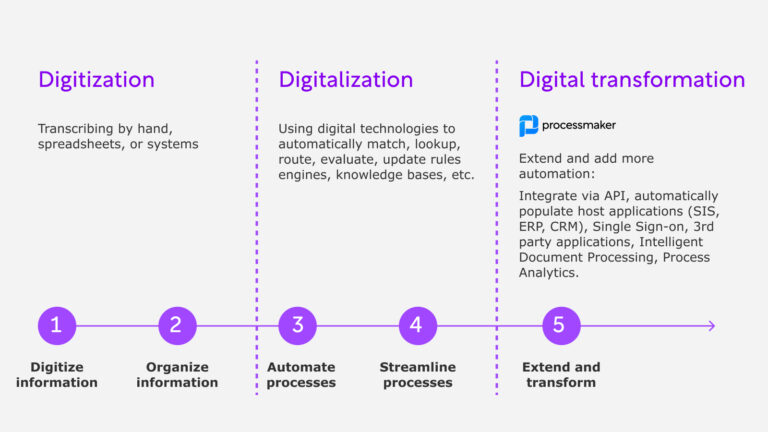Finally – Workflow for Slack
Slack may be where work happens, but if you want workflow to happen in Slack there was no easy way to do it…until now. Slack Workflow solves this problem.
Thanks to ProcessMaker I/O workflow can now happen in Slack. ProcessMaker I/O is a scalable workflow microservice that can be added to any software to power workflow in that software. ProcessMaker I/O is an innovative new solution that breaks the traditional SaaS Software model.
In the case of Slack Workflow, all of the workflow actions, messages, and assignments happen natively in Slack. There are no external configuration screens, no clunky external UIs just pure slack goodness.
To set up your company’s Slack Workflow, you can follow our simple Step-by-Step instructions or Watch our Video Tutorial. You can even download the BPMN 2.0 process file (see image below) that governs the process execution (if you don’t know what a BPMN 2.0 file is don’t worry about it :).
What Sort of Workflows Should you Run in Slack Workflow
You should be using workflows for anything that requires a formal request and approval. We are talking about workflows such as these:
- Purchase Request Process
- Leave Request Process
- Employee Onboarding Process
- System Access Requests
- Engineering Change Orders (ECOs)
- AFE Requests
Today your organization is either doing these poorly with email, pdfs, and excels, or you are doing them informally in Slack with chats. The problem with the former is that no one in your organization likes the user experience. The problem with the latter is that you have no audit trail, no formal reporting, no sense of bottlenecks, and no ability to track your business. Let’s put it this way – YOU HAVE NO PROCESS.
Using Slash Commands to Start Slack Workflows
Now you can have it all. You can have the ease and beauty of slack combined with the ability to report and audit data and actions. Everything can start from simple Slack Workflow slash commands like these:
/Absence_Request [fromDate m/d/Y] [toDate m/d/Y]
or
/Purchase_Request [item] [quantity] [dollarvalue]
or
/Employee_Onboarding [employeeName] [startDate m/d/Y] [reportsTo] [position]
We could also setup our slash commands to be followed by a friendly Slackbot that might probe the requester with deeper questions:
- Are you requesting Paid or Unpaid Leave?
to which we would answer “Paid” (of course).
Or for a purchase request, we might ask the question:
- Do you need to use expedited shipping?
“Expedited” (of course).
Add Simple Approve Reject Buttons Directly in your Slack Messages
Once we submit a request via the slash command, we then route it to either a person or a group. In the case of Slack, a group = #channel. In our process, we decide to always route to a group and use a self-service algorithm so that anyone in the channel can claim the request and process it. So we simply route the request to #managers or #human resources each time. Of course, since these are approval driven slack workflows, we expect nothing less than to record our actions by clicking some easy to use buttons that look like these:
Indeed, we can put the Approve & Reject buttons directly in the Slack message as follows:
To place these actions in the Slack message, we simply took advantage of Interactive Messages in Slack. It is very easy to setup. Your management will love clicking on these buttons.
Replace Email with Slack
One of Stewart Butterfield’s ambitions with Slack is to replace email. He has already been quite successful at achieving this goal. More than 5 million workers use the app daily to message their teams, upload and share documents, and share ridiculous memes. The company is reportedly valued at $5 billion now. Quite impressive.
However, although Slack really is the perfect replacement for email, it does not solve the problem of workflow in email. When we originally setup ProcessMaker as an open source BPM solution in 2008, one of our goals was to take workflow out of email. The problem as we saw it is that email is full of things that really aren’t emails at all. Email is full of approval requests that are part of structured workflows. People send their bosses little notes saying things like, “Hey I need a new computer – can I get one?” or “Hey, I am going to take the next 2 weeks off, ok?” Email has no efficient way of managing and categorizing these requests. Email is good at unstructured communication. Skype is also good. And then along comes Slack, and, yes, it is really good at managing unstructured communication in groups.
Still a Need to Solve the Process Problem in Slack
Slack, however, is just as bad as email and skype at handling structured requests. All three of these options fail when it comes to processing requests. Why do they fail? The answer is simple. We should be able to generate reports and audit logs for requests. Companies, tend to want to know how many requests happened in an hour, day, or week. We want to know who submitted the requests, when, and what for? We want to know statistics and numbers like “how many computer purchase requests did we approve in March? “How many vacation days did Billy Bob take during 2016?” We want to analyze trends and find performance bottlenecks and ways to improve.
If we take these requests out of email and out of slack and make them actionable requests, then we can track the number of requests, how long they took, and much more. So, whether we are talking about email or Slack, the problem is the same.
ProcessMaker I/O for Slack solves the problem. Adding the ProcessMaker I/O API to Slack creates Slack Workflow. Users never have to move to another interface, but all requests are captured as structured data. Then approvers can make decisions (approve/reject decisions ) based on the structured data.
The result is that Slack is now not only a place where work happens, it is also a place where decisions and workflow happen.
So SIGN UP for the ProcessMaker I/O API and checkout Slack Workflow today.




